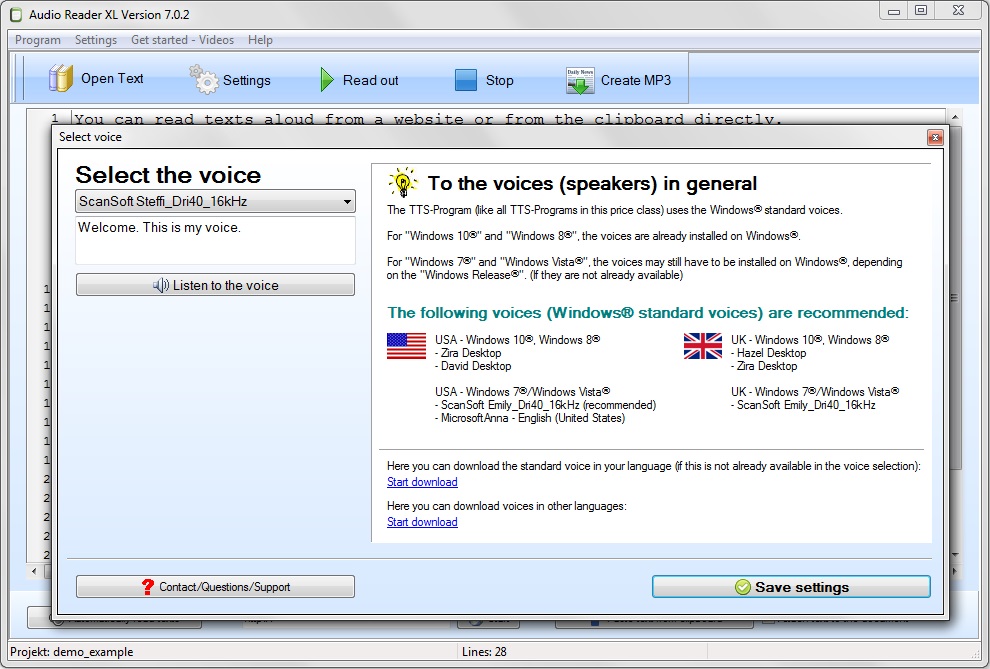The creation of synthetic speech has been a challenge and a striving effort since forever in human history. From around mid-1970s to early 1980s computer operating systems began implementing speech technologies and text into voice over audio found its place in the mainstream. The popular example of its early implementation was set by the famous physicist Stephen Hawking when he first used it for his voice in 1983. As the then two-way paging industry started using it, they realized the voice sounded natural however it lacked perfection.

This revolutionary invention has evolved from supporting user interfaces formerly limited to text interactions, to support audio interactions by coupling with voice recognition. TTS technology turned out as a cost-effective and speedy option for voice over(VO) production and in the future, it seems that it is going to dominate VO applications that require localization. Today an innate synthesized speech has been adopted by numerous people. Let us explore why.
What is Text to Speech/TTS?
In simple terms, TTS is a software that converts text into verbal speech. Examples include voice GPS directions or practice reading instructions used in bimodal learning by challenged students.
TTS allows Windows to convert on-screen messages to voice audio in order to make their operating system accessible to the visually impaired. “http://www.ttssoft.org/” products allow corporations and even users themselves, to rapidly translate content into a precise voiceover as computers can now read out loud.
Features of Text-to-Speech Software
- Enables text-to-speech from any document type ( Word, text, PDF, Excel, RTF), web pages and emails.
- Supports XML tag speech tuning.
- Facilitates the creation of conversations, custom pronunciations, bookmarks, and pauses.
- Incorporates a fully featured document editor with various text processing features.
- Rich and fully configurable user interface.
- Enables text extraction from e-books and scanned paper documents.
- Effortless set up to transfer copied text and conversion into speech.
- High-capacity document history.
Who can benefit from TTS?

Engineers and linguists have brought synthesized speech to life so that everyone could benefit. Below are few beneficiaries for whom TSS is making a difference:
- Severe Speech Impairments patients
- A voice output communication aid (VOCA) or speech-generating device (SGD), helps people with severe speech impairments who otherwise they would be unable to communicate verbally.
- Renowned film critic Roger Ebert and Stephen Hawking (who suffered from Amyotrophic lateral sclerosis/ALS are well-known users of speech-generating devices using TTS technology.
- Elderly Readers
- Elderly readers can find it daunting to strain their eyes by reading small text and books. TTS can alleviate this issue by reading out loud for them.
- Visually impaired
- People with mild visual impairments or sensitivity to light might find it painful to read.
- Blue light from screens is known to have adverse health effects as it disrupts our biological clocks and may surge the risk of diabetes and obesity rates. TTS offers a safer way where one can listen to the audio version while being safe from harmful lights and also can walk around instead of being sat for long hours.
- Foreign Language Students
- According to science, a kinesthetic or visual learner can better retain information by adding an auditory method. Also, students learning a new dialect can benefit by listening to different languages.
- TTS voices come from native speakers so that foreign language students can get an idea of how pronunciation works as words are highlighted when they’re being read aloud.
- Multilingual Crowds
- The world is getting smaller as globalization kicks in, so it is common that people from various cultures and backgrounds interact daily for various reasons.
- Multilingual households are common and new generations who feel the need to maintain a bond through emails or letters may find TTS an option to understand their grandparents’ language.
- Multitaskers
- With the fast-paced life, we need to manage tasks simultaneously saving time and effort. TTS can be of great help to such multitaskers.
- TTS can help during the assembly of complex devices or something as simple as furniture fixtures by dictating instruction manuals while one can concentrate on the latter. Busy homemakers can concentrate on cooking sumptuous meals while their PC reads out the recipe.
Where to find excellent Text to Speech Software?
I hope you are now ready to join the text reader revolution. The next obvious question is where to find a TTS that is not just a boring robot voice and has minimum system requirements. soft offers Text to Speech Software that helps you choose the voice that is most comfortable while it works on all Windows versions and is available for free to download!

